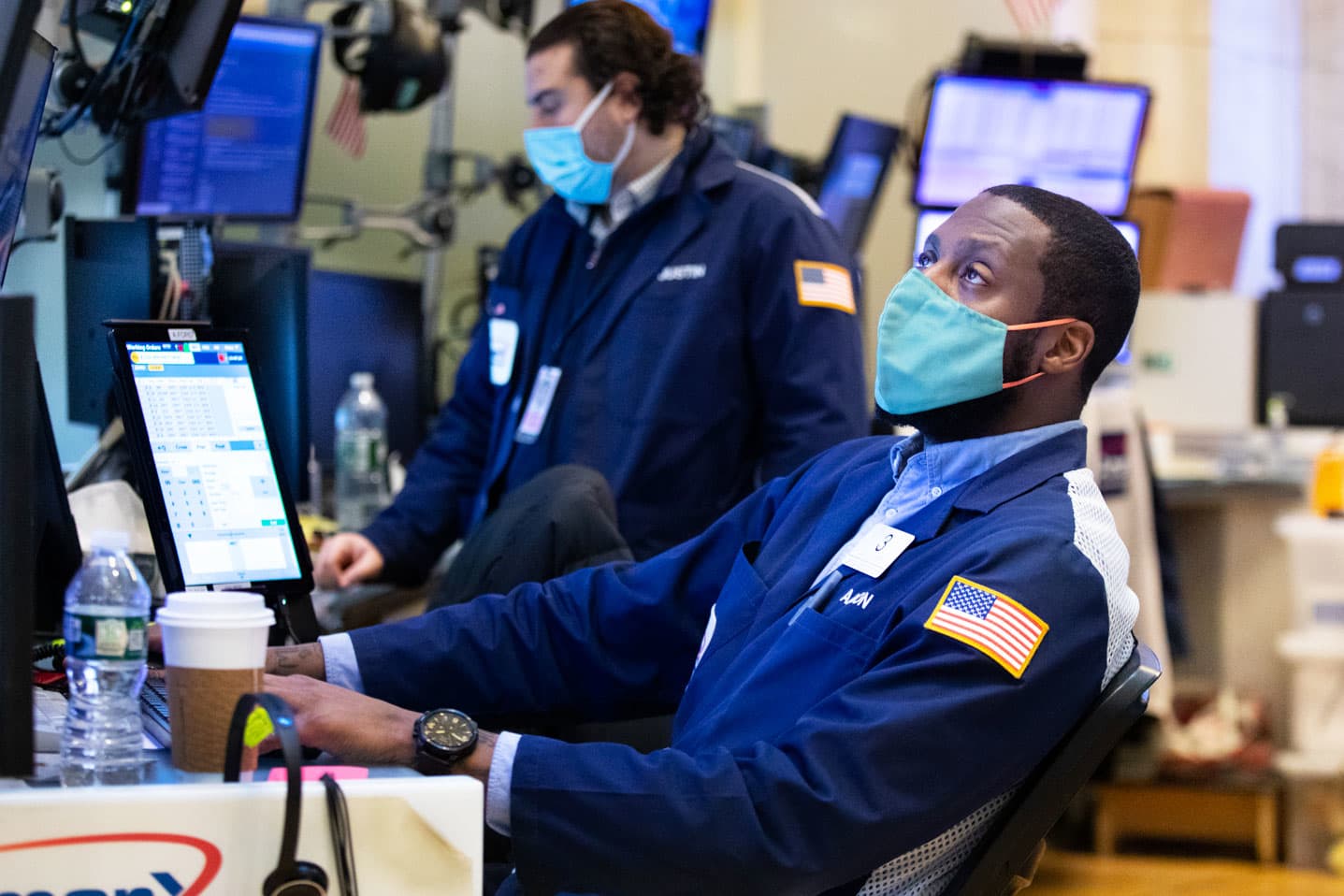S&P 500 futures are flat after benchmark wraps up worst month since March 2020

Stocks futures were little changed on Tuesday morning, following a wild January on Wall Street that saw investors struggle with a Federal Reserve policy shift.
Futures tied to the Dow Jones Industrial Average rose about 17 points, or 0.05%. S&P 500 futures traded 0.1% higher, while Nasdaq 100 futures added 0.3%.
In corporate news of note, AT&T said it will be shedding its stake in WarnerMedia following a planned merger of the unit with Discovery. AT&T’s board also approved a post-close annual dividend of $1.11, compared to the current rate of $2.08, due to the spinoff. Shares fell 2.7% in premarket trading following the news.
Shares of UPS jumped 7% premarket after the shipping company beat earnings estimates and raised its quarterly dividend 49%. Its rival FedEx added 3%.
Over the past several days, investors have stepped in to buy a dip in which the S&P 500 briefly fell into correction territory, defined as a drop of 10% from the most recent high. The large-cap index has risen 2.4% over the past five trading days.
While stocks pulled off a tech-driven rally Monday, major averages still suffered a brutal month marked by wild price swings. The S&P 500 and the Nasdaq Composite posted their worst months since March 2020 at the depth of the pandemic, down 5.3% and 8.9%, respectively. It was also the S&P 500’s biggest January decline since 2009. The blue-chip Dow slid 3.3% for the month.
January’s sell-off came as the Fed signaled its readiness to tighten monetary policy, including raising interest rates multiple times this year, to tame inflation that has shot up to the highest level in nearly four decades, and reducing its balance sheet. Investors flocked out of growth-oriented technology shares, which are particularly sensitive to rising rates.
Volatility exploded as investors deciphered the Fed’s messaging on its policy pivot. At one point last week, the S&P 500 dipped into correction territory on an intraday basis. The recent comeback pushed the large-cap benchmark 6.3% below its peak. Meanwhile, the Nasdaq, which is weighted to tech names, is still in a correction, last down 12% from its all-time high.
Ed Yardeni, president of Yardeni Research, said last month’s market activity hasn’t turned him bearish, however.
“We believe that once the FOMC starts to raise the federal funds rate and details the pace of running off the Fed’s balance sheet, the financial markets will learn to live with tightening monetary policy as long as it doesn’t risk causing a recession,” he said Tuesday.
Still, many Wall Street strategists are reminding investors that corrections are normal in bull markets. Since 1950, there have been 33 S&P 500 corrections of 10% or more since 1950, and the median episode has lasted about five months, according to Goldman Sachs.
“The latest decline is a normal market correction that does not signal a recession or the end of this bull market,” said Chris Haverland, global equity strategist at Wells Fargo. “We continue to believe that economic growth and corporate earnings will be solid this year, and that the Fed will not be overly aggressive in dialing back monetary policy.”
Economic news on tap includes the ISM manufacturing report and the latest labor market view from the Job Openings and Labor Turnover Survey, both out at 10 a.m. ET.
Investors are awaiting more key earnings reports, with Alphabet, General Motors, Starbucks, AMD and PayPal due after the close.
So far, of the 172 companies in the S&P 500 that have reported earnings to date, 78.5% topped analysts’ estimates, according to Refinitiv.
“We still anticipate solid, albeit more modest, gains for markets this year, alongside more normal pullbacks, especially given the transition in monetary policy,” Keith Lerner, chief market strategist at Truist, said in a note.




